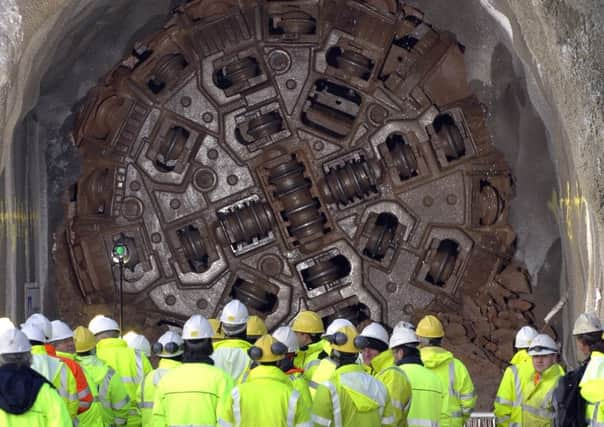Hydro sector blames slump on drastic subsidy cuts


Trade organisation Scottish Renewables said the future of the hydro sector, which employs about 500 people, now hinges on a delayed review of feed-in tariffs (FiTs), which pay a guaranteed price for each unit of green power generated.
The body said the current FiTs system created a “boom and bust” scenario as developers rushed to get new projects signed up ahead of the reduction in tariffs, but work on new schemes has dried up, leading the Scottish Environment Protection Agency (Sepa) to disband a team of specialists it had created to deal with a flood of hydro applications.
Advertisement
Hide AdAdvertisement
Hide AdJoss Blamire, senior policy manager at Scottish Renewables, said: “Sepa’s hydropower permitting team was temporarily stepped down in February this year, as a result of the sharp reduction in applications being received for hydro schemes. This followed two of the busiest years in the small-scale hydro sector’s history, showing that the boom and bust scenario we predicted is now happening.”
He added: “It paints a stark picture of the sudden decline in new hydro applications, caused by recent drastic and ill-considered cuts to FiTs.”
Sepa area manager Stuart Baird said the agency would consider reinstating its permitting team if the number of applications rises “significantly”.
“The experience gained has been firmly embedded within the local geographic teams, and most submissions will continue to be dealt with by these staff, who will continue to receive support from the relevant specialists and scientists,” Baird said, adding that disbanding the team had not resulted in any redundancies.
Blamire said the hydro industry can look forward to two “very busy years” as schemes that already have planning permission can be built, “but the future looks very bleak after that”.
His warning was echoed by Kenny Hunter, business development manager at Inchinnan-based MEG Renewables, which is part of the Mackays Stores fashion retailer that trades as M&Co.
Hunter told Scotland on Sunday: “We’re currently developing four schemes but beyond that we’ve got nothing in the pipeline because the economics don’t make any sense. In 2015 and 2016 there’s going to be building of hydro like never before, but almost nothing thereafter.”
He said the drop-off in new schemes is a result of “degression”, a system that triggers a reduction in tariffs as more capacity is approved.
Advertisement
Hide AdAdvertisement
Hide Ad“In 2013, 75 megawatts (MW) of hydro was submitted for pre-accreditation – about five times what’s built in the typical year,” Hunter said.
“That created a 20 per cent cut in FiTs, which meant schemes were just about viable, but in 2014 a further 90MW was submitted, so that’s going to create another 20 per cent degression this year.”
Scottish Renewables has called for the next UK government following the general election to tackle the problem urgently and safeguard the long-term future of the hydro industry.
Blamire said: “A review of FiTs, through which small-scale hydro is supported, was to be held before the election, but that isn’t now happening. We are now urging the next UK government to begin that review as soon as possible.”
A Scottish Government spokesman said: “Energy minister Fergus Ewing has repeatedly raised concerns with the UK government that aspects of FiTs are causing unintended consequences for the hydro sector and if left unchecked could lead to an uncertain future.
“The Scottish Government are keen to have early engagement with the next UK government on this issue.”